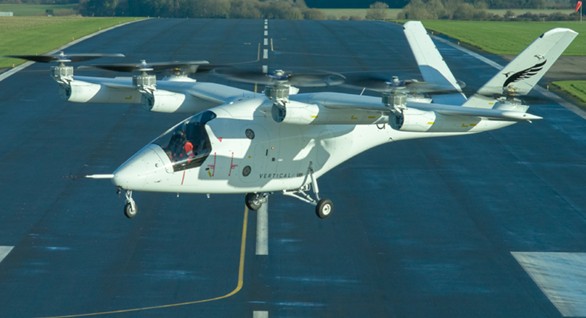
Vertical Aerospace today announced that it will adopt the Combined Charging Standard (CCS) for the VX4, joining BETA Technologies and Archer Aviation in driving a universal, fast-charging system for electric vertical take-off and landing (eVTOL) aircraft.
“The CCS fast-charging standard will allow Vertical’s VX4 to achieve fast turnaround times, including rapid battery charging and conditioning for shuttle operations,” said the company in a press release. “Vertical’s adoption of CCS will enable Vertical immediate interoperability with all CCS chargers of this standard, including BETA’s growing network. Today’s announcement aligns with the General Aviation Manufacturers Association (GAMA) call for standardized charging systems, essential for scaling and commercializing electric aviation, as outlined in its paper, “Interoperability of Electric Charging Infrastructure.”
Stuart Simpson, CEO of Vertical Aerospace, said: “With certification efforts with five aviation authorities and customers across four continents, Vertical, together with BETA and Archer, choosing this standard means the industry has decided. Standardizing charging infrastructure is a crucial step in making electric aviation commercially viable. By adopting the CCS, we’re ensuring that VX4 can integrate seamlessly into a shared charging network, which is great news for our customers and reinforces our commitment to delivering a scalable eVTOL ecosystem.”
Chip Palombini, BETA’s Charge Production Lead, said: “The true unlock of the next generation of aviation won’t come just from novel aircraft, it’s about a robust interoperable charging infrastructure that can support all manufacturers. We are building a foundation that will allow eVTOLs to operate and scale safely, reliably, and efficiently across the globe, and Vertical Aerospace shares that vision.”
David Dunning, Director of Global Innovation & Policy, General Aviation Manufacturers Association (GAMA), said: “A unified charging standard is important as it would assist in reducing costs, streamlining operations and accelerating adoption of electric aircraft, which benefits manufacturers, operators, infrastructure operators and passengers alike.”
For more information

